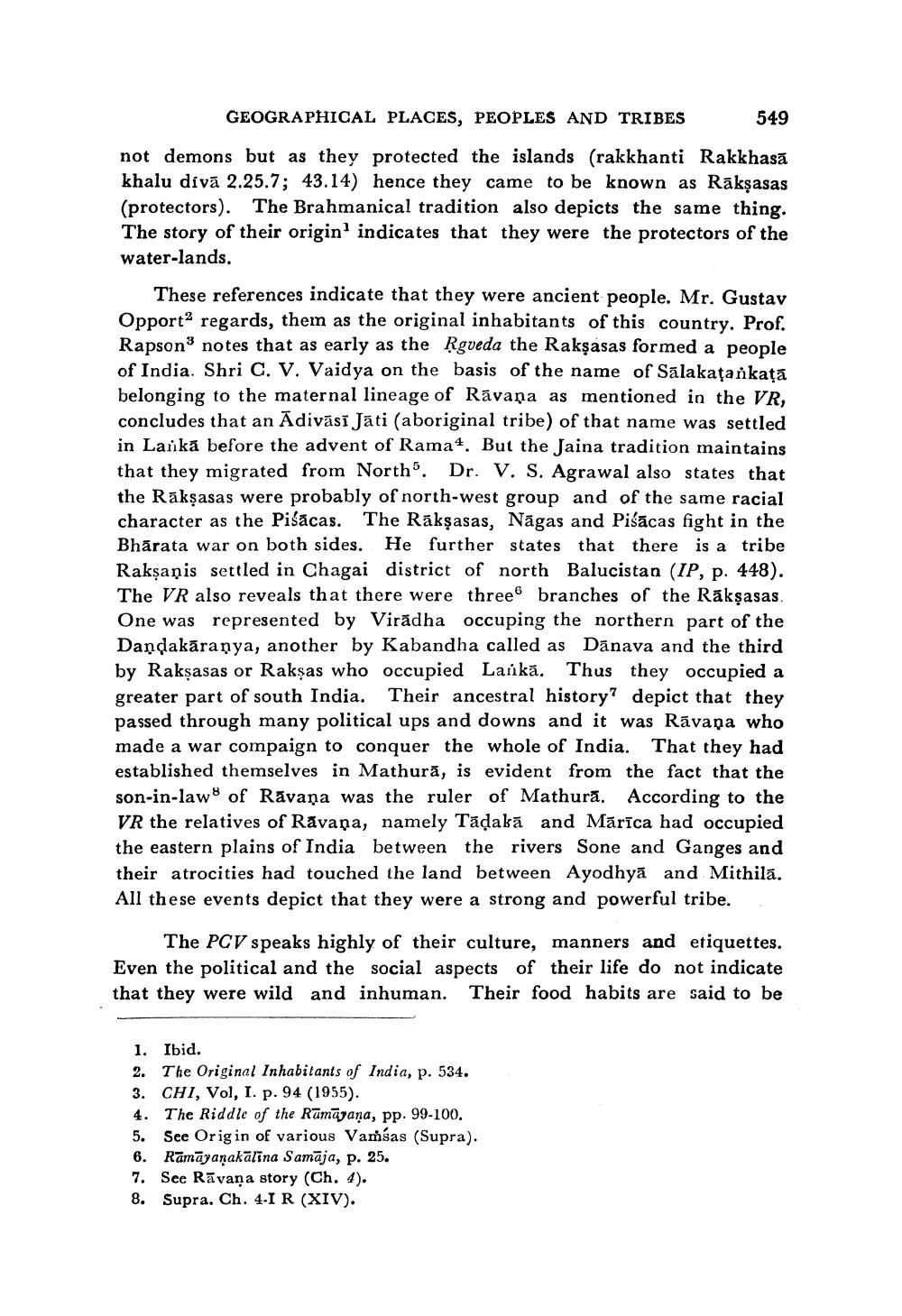________________
GEOGRAPHICAL PLACES, PEOPLES AND TRIBES
549
not demons but as they protected the islands (rakkhanti Rakkhasā khalu divā 2.25.7; 43.14) hence they came to be known as Raksasas (protectors). The Brahmanical tradition also depicts the same thing. The story of their origin' indicates that they were the protectors of the water-lands.
These references indicate that they were ancient people. Mr. Gustav Opport? regards, them as the original inhabitants of this country. Prof. Rapsono notes that as early as the Řgveda the Rakşasas formed a people of India. Shri C. V. Vaidya on the basis of the name of Salakațankață belonging to the maternal lineage of Rāvana as mentioned in the VR, concludes that an Ādivāsī Jāti (aboriginal tribe) of that name was settled in Laukā before the advent of Rama4. But the Jaina tradition maintains that they migrated from North". Dr. V. S. Agrawal also states that the Raksasas were probably of north-west group and of the same racial character as the Pisacas. The Rākşasas, Nāgas and Pisācas fight in the Bhārata war on both sides. He further states that there is a tribe Rakṣaṇis settled in Chagai district of north Balucistan (IP, p. 448). The VR also reveals that there were three branches of the Rākşasas. One was represented by Virădha occuping the northern part of the Dandakāraṇya, another by Kabandha called as Dānava and the third by Raksasas or Rakşas who occupied Lankā. Thus they occupied a greater part of south India. Their ancestral history? depict that they passed through many political ups and downs and it was Rāvana who made a war compaign to conquer the whole of India. That they had established themselves in Mathurā, is evident from the fact that the son-in-laws of Rāvana was the ruler of Mathura. According to the VR the relatives of Rāvana, namely Tādaka and Márīca had occupied the eastern plains of India between the rivers Sone and Ganges and their atrocities had touched the land between Ayodhyā and Mithilă. All these events depict that they were a strong and powerful tribe.
The PCV speaks highly of their culture, manners and etiquettes. Even the political and the social aspects of their life do not indicate that they were wild and inhuman. Their food habits are said to be
1. Ibid. 2. The Original Inhabitants of India, p. 534. 3. CHI, Vol, I. p. 94 (1955).
The Riddle of the Ramāyaṇa, pp. 99-100. 5. See Origin of various Vamsas (Supra). 6. Rāmāyanakālina Samāja, p. 25. 7. See Rāvana story (Ch. 4). 8. Supra. Ch. 4.I R (XIV).




